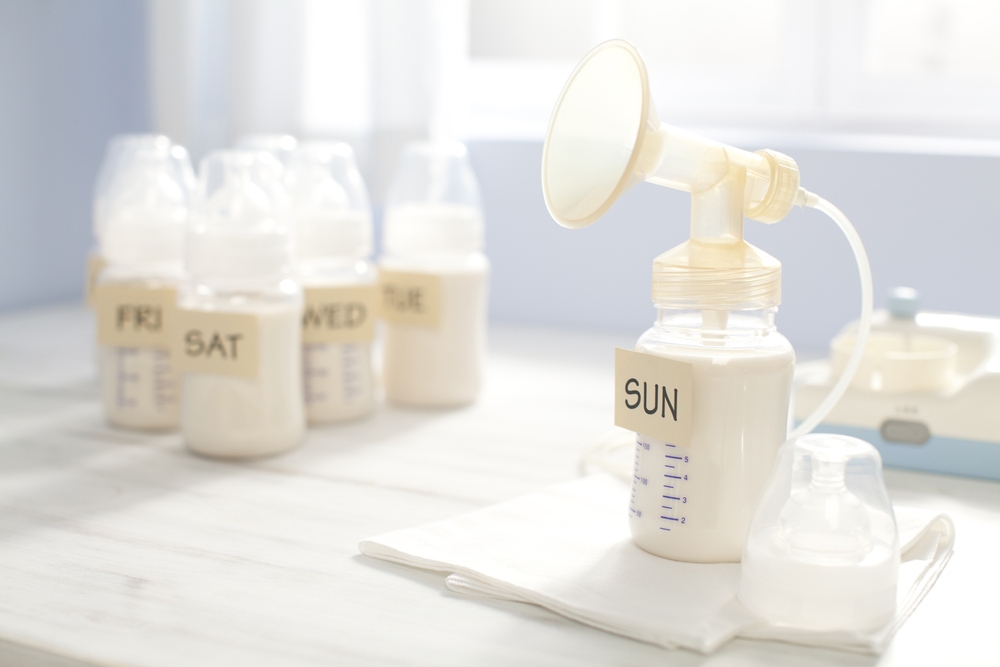How to use a breast pump for the first time: Your guide to easier pumping
Using a breast pump for the first time can feel a little daunting. The first time you use a pump, you may have just recently given birth, and you may still be getting accustomed to nursing your baby at the breast. For many parents, the idea of using a pump to extract your milk may seem like one more thing in a long line of adjustments. It may also come as a welcome relief if your baby is having trouble latching or if you're experiencing engorgement (a painful swelling and over-fullness of the breasts).
Follow these tips to help guide you through the process of getting to know your pump and making sure you have a positive pumping experience.
Get to know your pump
Although there are some pumps that can be worn discreetly inside your bra, most standard breast pumps have the same basic parts, including:
- A motor, which may be battery-powered, corded, or USB-chargeable.
- Tubing, which creates suction. Note that air passes through the tubing to create suction — milk does not go through the tubing.
- Flanges. These are the horn-shaped pieces that fit against your breasts.
- A connector, which joins the flange to the bottle that collects your milk.
- A valve, a small piece of rubber that opens and shuts during suction to allow milk to drain from the flange, down through the connector, and into the bottle.
- A bottle for milk collection. Most pumps come with a set of bottles, but almost any standard-size bottles (not wide-mouth bottles) can be used directly with breast pump connectors.
How to use a breast pump
Before you begin to pump, be sure that your pump is clean and ready to go. Pump manufacturers usually recommend that bottles, flanges, and other pump parts that will come into contact with your milk be sanitized before use. Follow your manufacturer's instructions. Note that since milk won't pass through your breast pump tubing, it should not be immersed in water. Immersing your tubing will likely cause mold or mildew to form inside it, and it will need to be replaced.
To use your pump:
- Find a place where you can relax and sit comfortably. It's helpful to have a table where you can place your pump and any extra supplies.
- Center your nipples in the flanges of your breast pump, holding them in place with one arm horizontally across your chest. This takes some practice, so it may be easier for you to pump just one breast at a time at first. If you choose single-pumping, the other breast will likely produce some milk. You may want to place a clean bowl under that breast to catch the extra milk.
- Use your free hand to turn on your pump, taking care to start at the lowest suction. A one to two-minute delay before your milk "lets down" is completely normal. Gradually increase the suction to the point where you feel you are getting good milk production, but do not go to the point of pain. Pumping should never be painful.
- Pump until your breasts are emptied. For most women, this takes between ten and twenty minutes. Sometimes, milk flow ebbs and a mother experiences a second "let down," so unless you know your body well, don't stop pumping before ten minutes even if your milk flow has slowed.
- Turn off the pump and then remove the flanges from your breasts.
- Store your milk for your baby. Milk can be safely stored at room temperature for up to four hours, refrigerated for up to four days, or frozen for up to six months. It's best to use freshly pumped or refrigerated milk before frozen milk.
- Clean your pump so that it's ready for your next use.
If your baby is newborn
For the first few days after birth, your breasts produce colostrum, a sticky yellow substance full of immune-boosting properties. Colostrum is powerfully good for babies, but you will only produce a small quantity. If you try to pump before your milk "comes in" around day three or four after birth, you may feel like you're doing something wrong, but that's not necessarily true. If you only pump a teaspoon or two of colostrum at a time, that's perfectly normal. Some women have more success with hand-expression during the time they're producing colostrum and then move to a pump when they start to produce milk.
When you start to produce milk
Around day three or four postpartum, your breasts will fill with milk. If you are unable to nurse your baby, pump at least every three hours (including during the night) to empty your breasts and prevent engorgement. Several weeks after birth, your milk supply will be well established. You'll need to nurse or pump at least eight times every 24 hours, including at least one nursing or pumping session during the night, in order to maintain your milk supply.
A quality breast pump will help you nourish your baby throughout your breastfeeding relationship. If you need help getting off to a good start, reach out to an International Board Certified Lactation Consultant in your area.
For more prenatal breastfeeding advice, read 5 things expecting mothers need to know about breast pumps.




